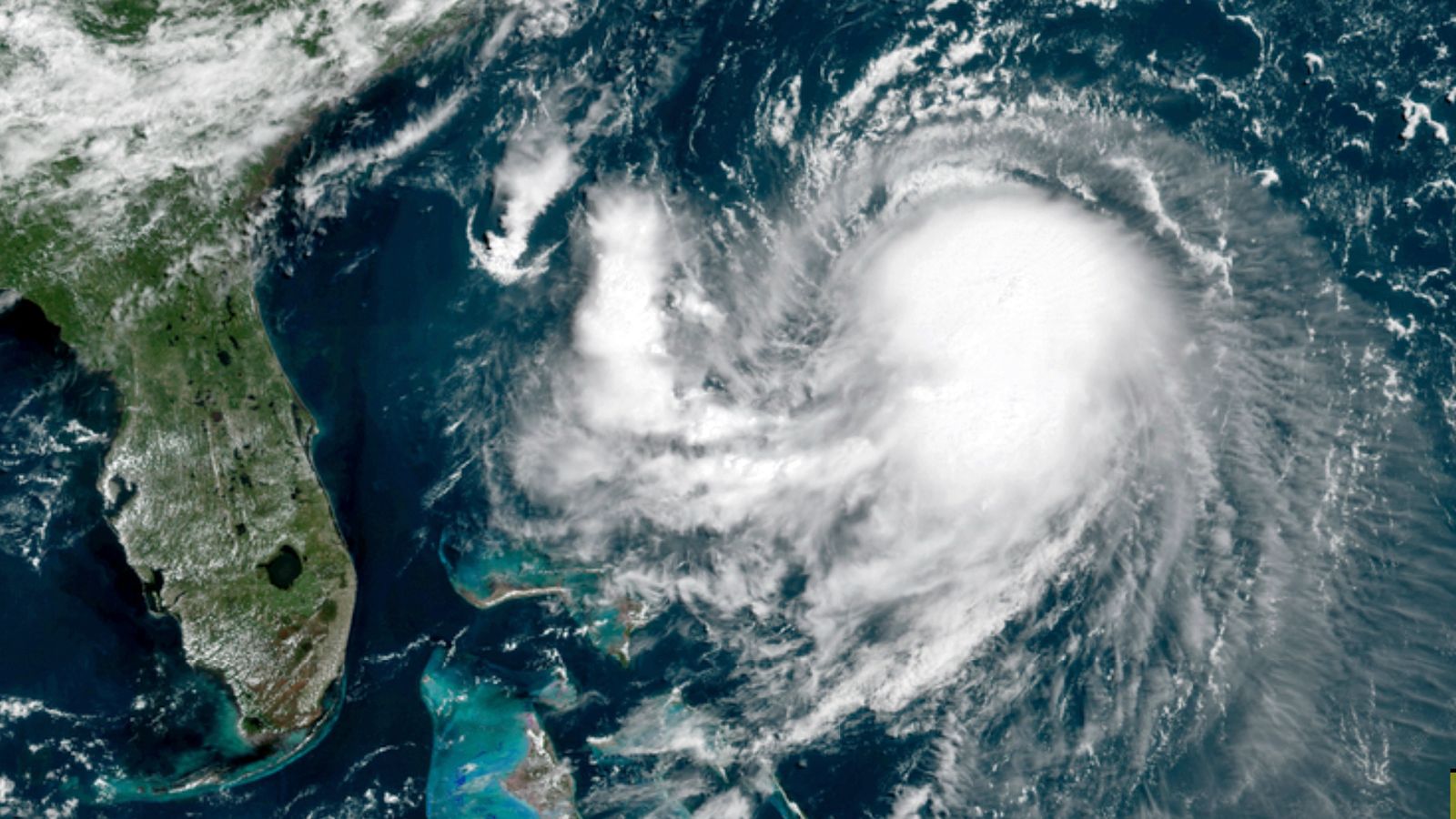New England is preparing for its first direct hit by a hurricane in 30 years, as storm Henri gathers strength in the Atlantic.
Henri is expected to reach hurricane strength when it makes landfall in the US on Saturday, according to the National Hurricane Centre which is tracking the weather system.
The impact could be felt in New England by Sunday, including on Cape Cod, which is teeming with tens of thousands of summer tourists.
On Friday, Massachusetts Governor Charlie Baker urged people vacationing on the Cape to leave before Henri hits, and those who planned to start vacations there to delay their plans.
“We don’t want people to be stuck in traffic on the Cape Cod bridges when the storm is in full force on Sunday,” he said.
1/3 Dangerous storm surge inundation & hurricane conditions are possible beginning Sunday due to #Henri in portions of Long Island, CT, RI, & southeastern MA, where a Storm Surge Watch & Hurricane Watch are in effect. Follow advice given by local officials. pic.twitter.com/0LFyTw9E5o
“This storm is extremely worrisome,” Michael Finkelstein, police chief and emergency management director in East Lyme, Connecticut, added.
“We haven’t been down this road in quite a while and there’s no doubt that we and the rest of New England would have some real difficulties with a direct hit from a hurricane.”
Mr Finkelstein said he’s most concerned about low-lying areas of town that could become impossible to access because of flooding and a storm surge.
The National Weather Service warned of the potential for damaging winds and widespread coastal flooding from Henri, while authorities urged people to secure their boats, fuel up their vehicles and stock up on canned goods.
Rainfall between two to five inches (five to 12cm) was expected in the region between Sunday and Monday.
On Friday evening, the system was centred in the Atlantic Ocean about 345 miles (560km) south-southeast of Cape Hatteras, North Carolina, and about 745 miles (1,200km) south of Montauk Point, New York. It had maximum sustained winds of 70mph (110kph).
Henri was heading northwest Friday morning, but forecasters expect it to make a turn toward the north and approach the New England coast.
Meanwhile, further south Hurricane Grace was headed for a second landfall in Mexico.
Grace was temporarily knocked back to the tropical storm category, but it emerged late Thursday over the relatively warm Gulf of Mexico and was gaining energy, leading forecasters to predict it would make landfall once again as a Category 2 hurricane.
The US National Hurricane Center said Grace’s winds were back up to 85mph (140kph) early Friday when it was centered about 200 miles (325km) east of Tuxpan.
The forecast track would take it toward a coastal region of small fishing towns and beach resorts between Tuxpan and Veracruz by Friday night, then over a mountain range toward the heart of the country and the greater Mexico City region.
Forecasters said it could drop six to 12in (15 to 30cm) of rain, with more in a few isolated areas – bringing the threat of flash floods, mudslide and urban flooding.
Please use Chrome browser for a more accessible video player
Grace previously hit Haiti – two days after a powerful earthquake killed hundreds and injured thousands in the Caribbean nation.
It brought heavy rain and strong winds of around 35 mph (55 kph) to country’s southwestern area, hit hardest by Saturday’s quake.
In the United States, the National Weather Service has warned residents and beachgoers on the North Carolina coast to look out for rip currents and rough surf associated with Henri.
Meteorologist Steven Pfaff of the weather service’s Wilmington office said swells from Henri were expected to create hazardous surf conditions beginning Friday and continuing on Saturday.
In Connecticut the Coast Guard urged boaters to stay off the water, saying in a statement: “The Coast Guard’s search and rescue capabilities degrade as storm conditions strengthen. This means help could be delayed.”
Thursday marked exactly 30 years since Hurricane Bob came ashore in Rhode Island as a Category 2 storm, killing at least 17 people and leaving behind more than $1.5bn worth of damage.
Bob, which left streets in coastal towns littered with boats blown free of their moorings, left hundreds of thousands without power and water for days.
Large swathes of the Eastern seaboard were still recovering on Friday from the effects of Henri’s predecessor, Tropical Depression Fred.
In North Carolina, Haywood county sheriff Greg Christopher said seven individuals remained unaccounted for, down from around 20 people reported missing on Thursday.
Mr Christopher also confirmed the identities of the two people who died during Fred, which include a 68-year-old and an 86-year-old resident living in the Cruso area.
“Our thoughts and prayers are extended to both these families, and we will support both these families in this tragic loss,” he said.






















